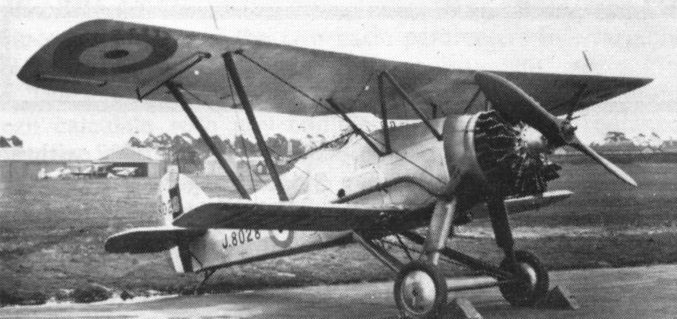Armstrong Whitworth Starling
The Armstrong Whitworth A.W.14 Starling was developed to meet the requirements of Specification 28/24, for a single-seat fighter capable of operating in day and night-time conditions to replace Armstrong Whitworth’s earlier Siskin. Armament was two synchronised .303 in Vickers machine guns.
Two prototypes were ordered, with the first J8027, powered by a 385 hp (287 kW) Armstrong Siddeley Jaguar VII radial engine flying on 12 May 1927. It proved to be underpowered with this engine, and was therefore re-engined with a 460 hp (340 kW) Jaguar V engine. Performance was still unimpressive however, with the first prototype not exceeding speeds of 160 mph (260 km/h) rather than the expected 180 mph (290 km/h), while low speed handling was poor. The prototype was evaluated against the later Specification F.9/26 in February 1926, but was rejected by the RAF, who instead selected the Bristol Bulldog. J8027 was returned to Armstrong Whitworth, who fitted it with new wings with Clark YH aerofoil section and leading edge slots fitted on the upper wings. It was given the civil registration G-AAHC in May 1929, and was shown at Olympia in London in July 1929. It was cancelled from the register in December 1930.
The second prototype, J8028 was heavily redesigned, with a more streamlined fuselage and revised wings, which although retaining the Clark YH aerofoil section, had smaller lower wings. It was powered by a 525 hp (391 kW) Armstrong Siddeley Panther II engine, first flying on 5 December 1929. It was evaluated as both a land-based interceptor against Specifications F.9/26 and F.20/27 and as a naval fighter to meet the requirements of Specification N.21/26. While showing better performance than the first prototype, it too was unsuccessful.











